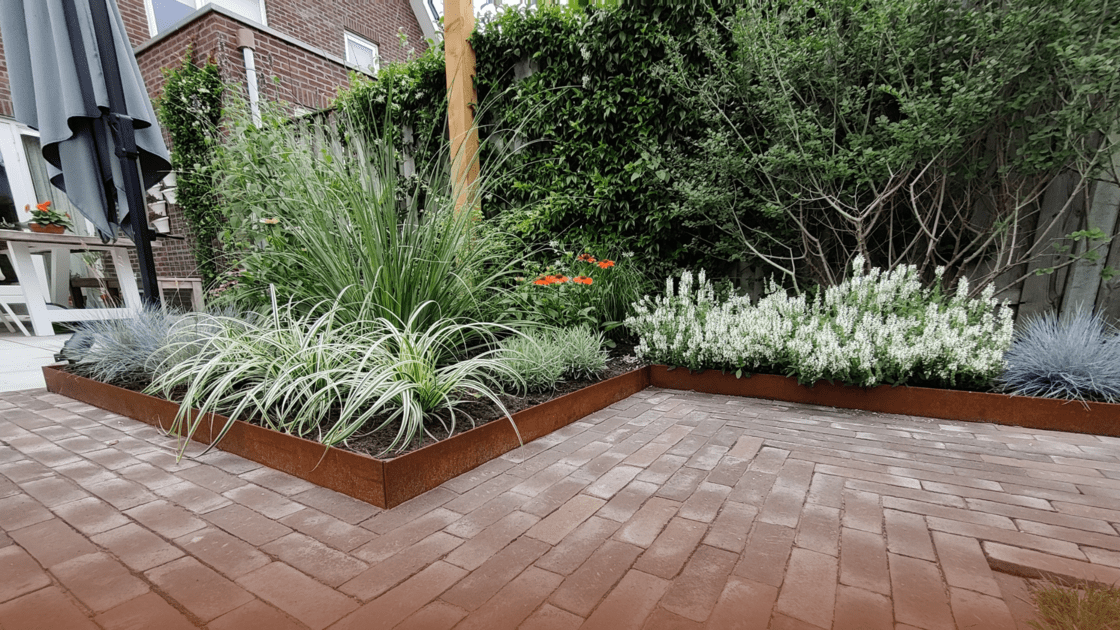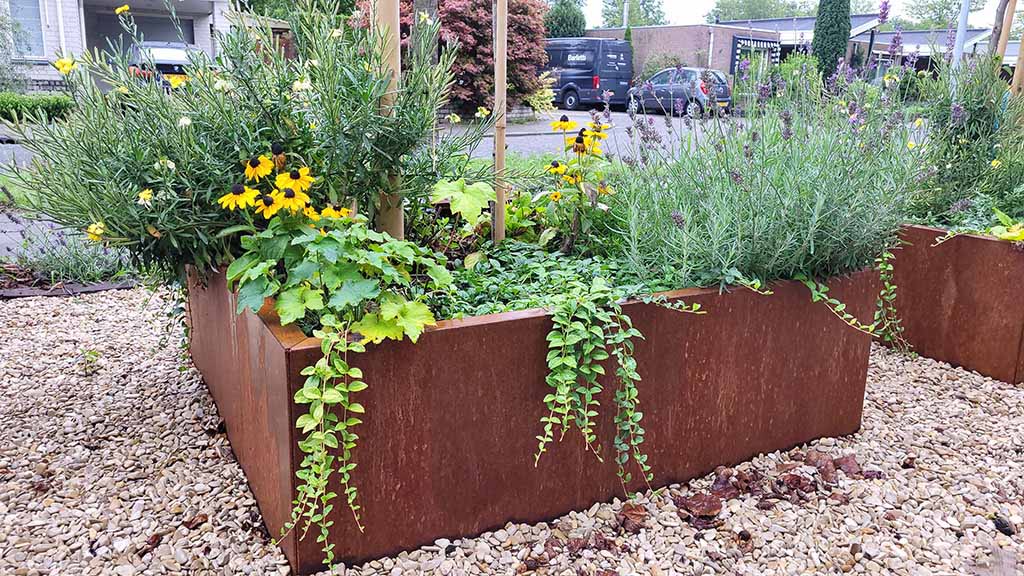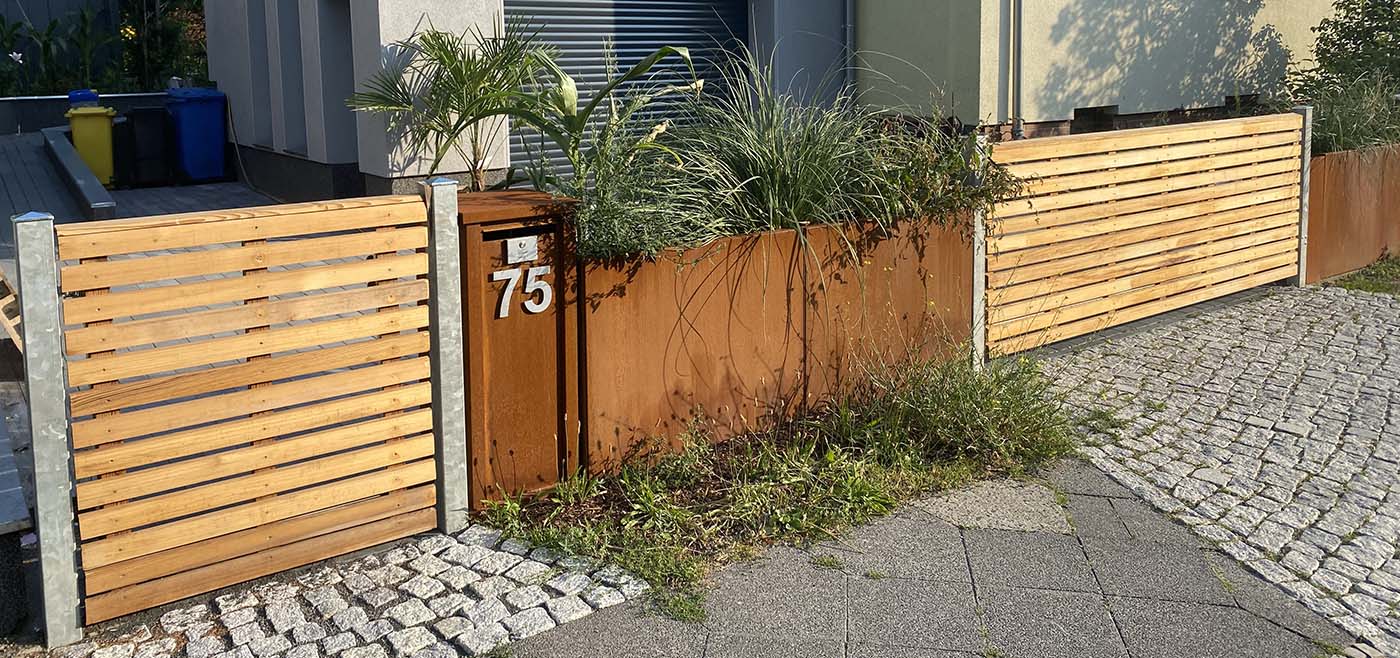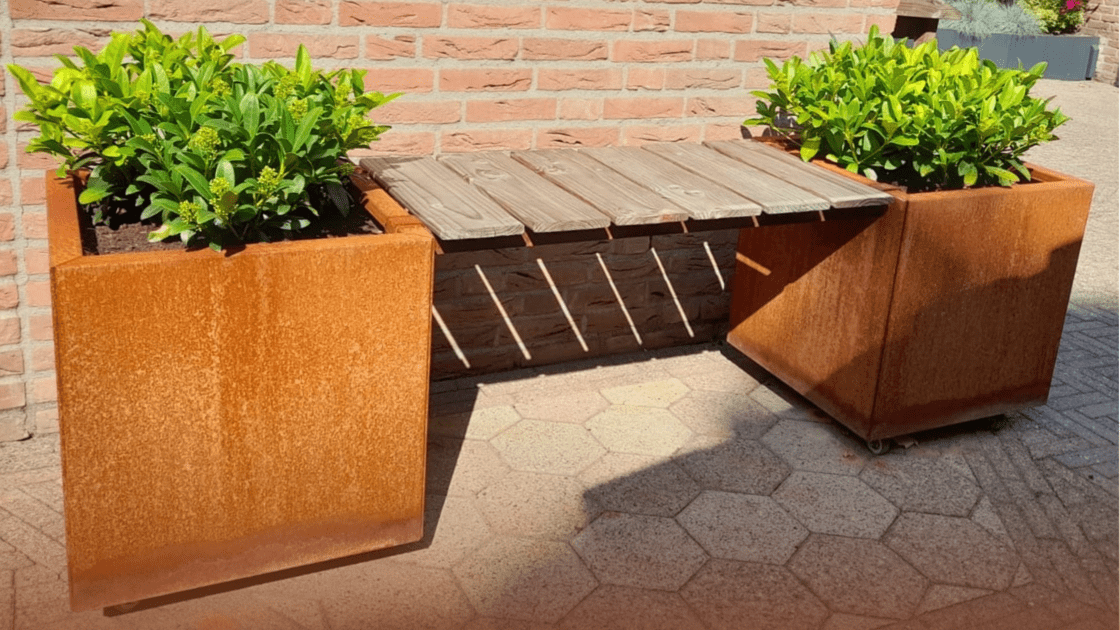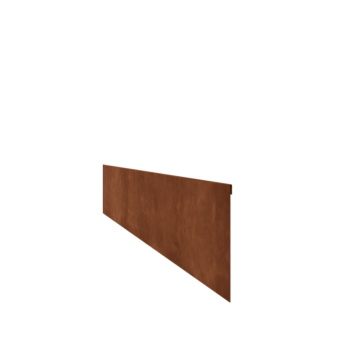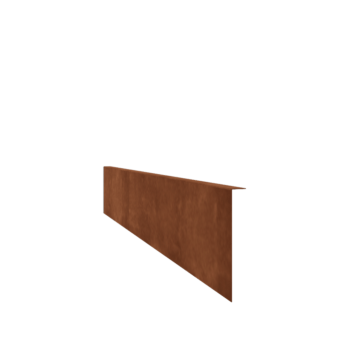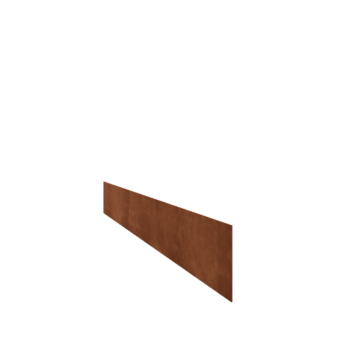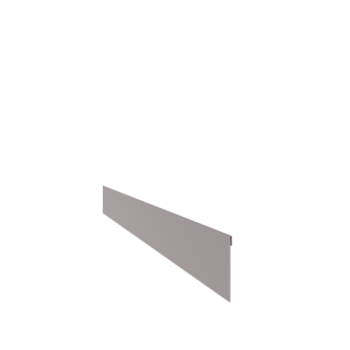What different types of border edges are there?
If you want to lay out or design your garden or outdoor space, it's important to think about all the details, such as border edges. These not only help to separate different parts of your garden, but they also make your outdoor space more beautiful and more organized.
There are three types of border edges available: set, pressed, and straight. These differ in shape, safety, flexibility, and applications.
In this article, we will explore the different types of border edges in more detail and discover more about the shapes and materials. We will also give tips on how to best use border edges in your garden.
Summary
- There are three types of border edges for sale: set, pressed, and straight.
- All types of border edges have the same amount of square meters of material and cost the same per meter.
- Border edges are available in corten steel and galvanized steel.
Difference in shape
There are three different types of border edges: set, pressed, and straight models. Below, we delve deeper into these variants and explain the differences:
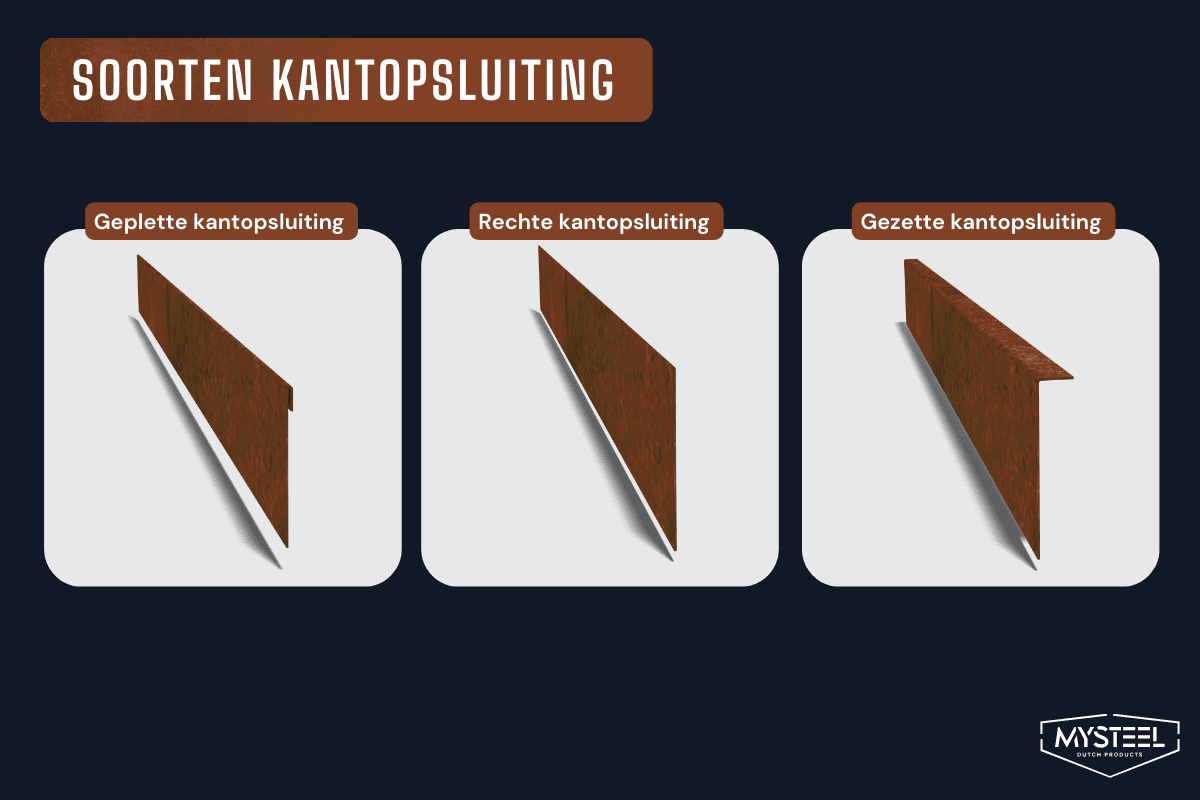

Set border edge
The set border edge has a flat top and the following dimensions:
- Width of flat top: 3 cm
- Height: 12 cm, 22 cm, 34 cm, and 45 cm
- Material thickness: 1.5 mm
- Length: 1.5 meters or 2.4 meters
The set border edge is a popular choice due to its sleek and modern appearance.
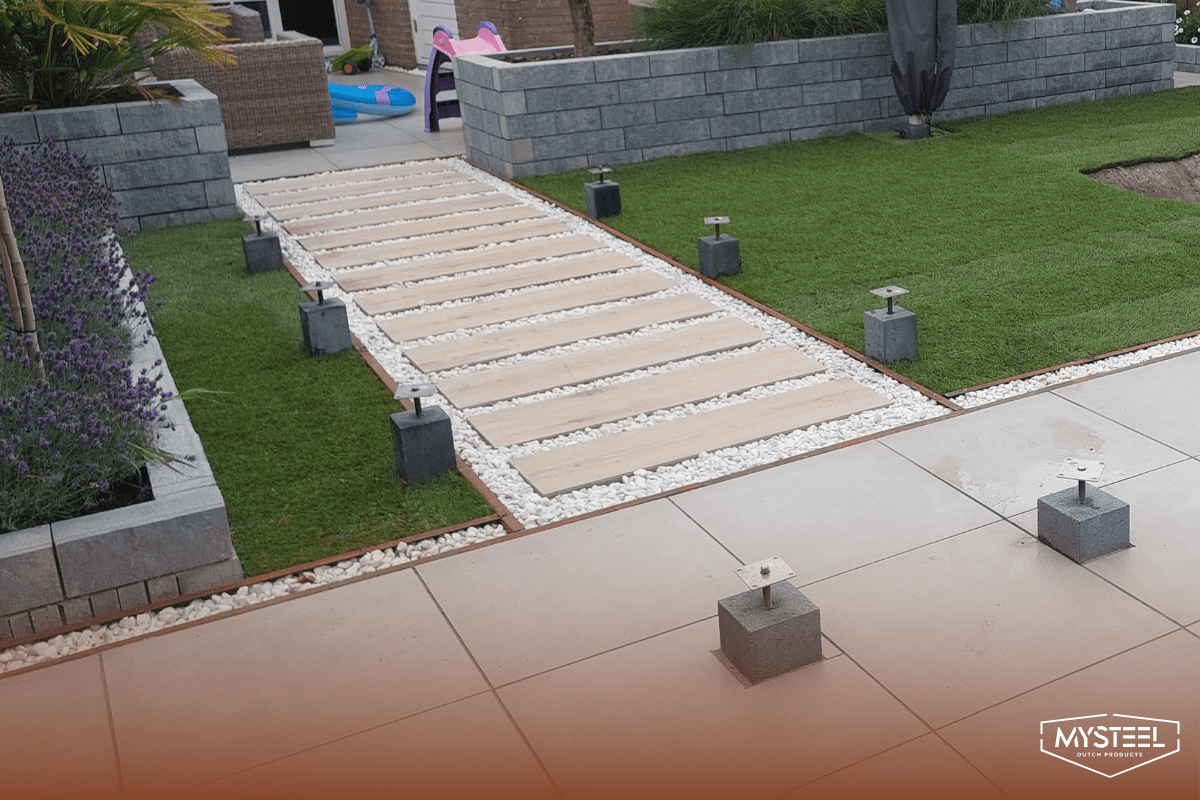

Pressed border edge
The pressed border edge has a more traditional look with a folded edge. This edge not only looks stylish but also provides extra strength. The dimensions of the pressed border edge are:
- Folded edge: 2 cm
- Height: 13 cm, 23 cm, 35 cm, and 45 cm
- Material thickness: 1.5 mm
- Length: 1.5 meters or 2.4 meters
This border edge is ideal if you want to give your garden a more classic or rustic look.
Flex border edge
The flex border edge also has a pressed edge for a more traditional appearance with the folded edge. Due to the grooves in the edge, the steel is easy to bend into the desired shape. The dimensions of the flex border edge are as follows:
- Folded edge: 2 cm
- Height: 13 cm, 23 cm, 35 cm, and 45 cm
- Material thickness: 1.5 mm
- Length: 1.5 meters or 2.4 meters
This border edge is easy to install and provides the same classic or rustic look to your garden.
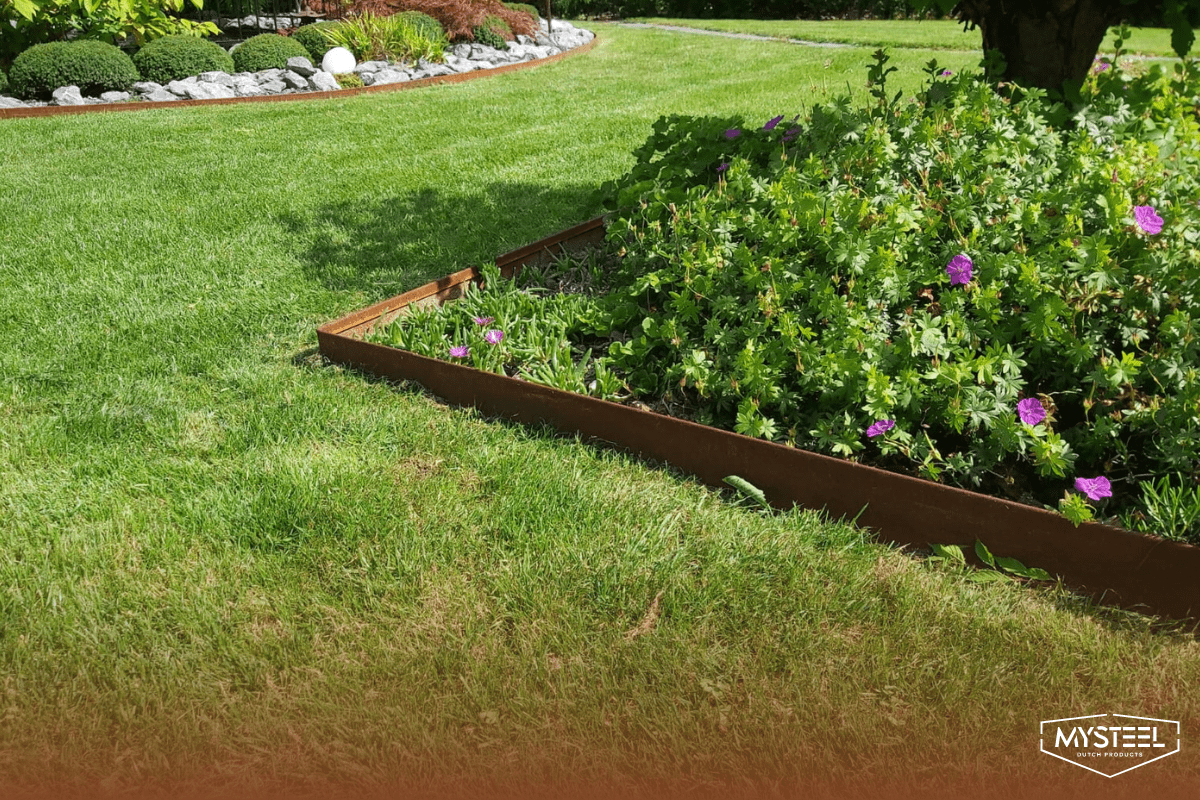

Straight border edge
The straight border edge is the simplest variant, as it has not received any special processing. This border edge has the following dimensions:
- Height: 15 cm, 25 cm, and 37.5 cm
- Material thickness: 2 mm
- Length: 1.5 meters or 2.4 meters
The straight border edge can be used for straight lines, curves, and circles. This shape is ideal for creating clear boundaries between different parts of the garden, such as flower beds and lawns.
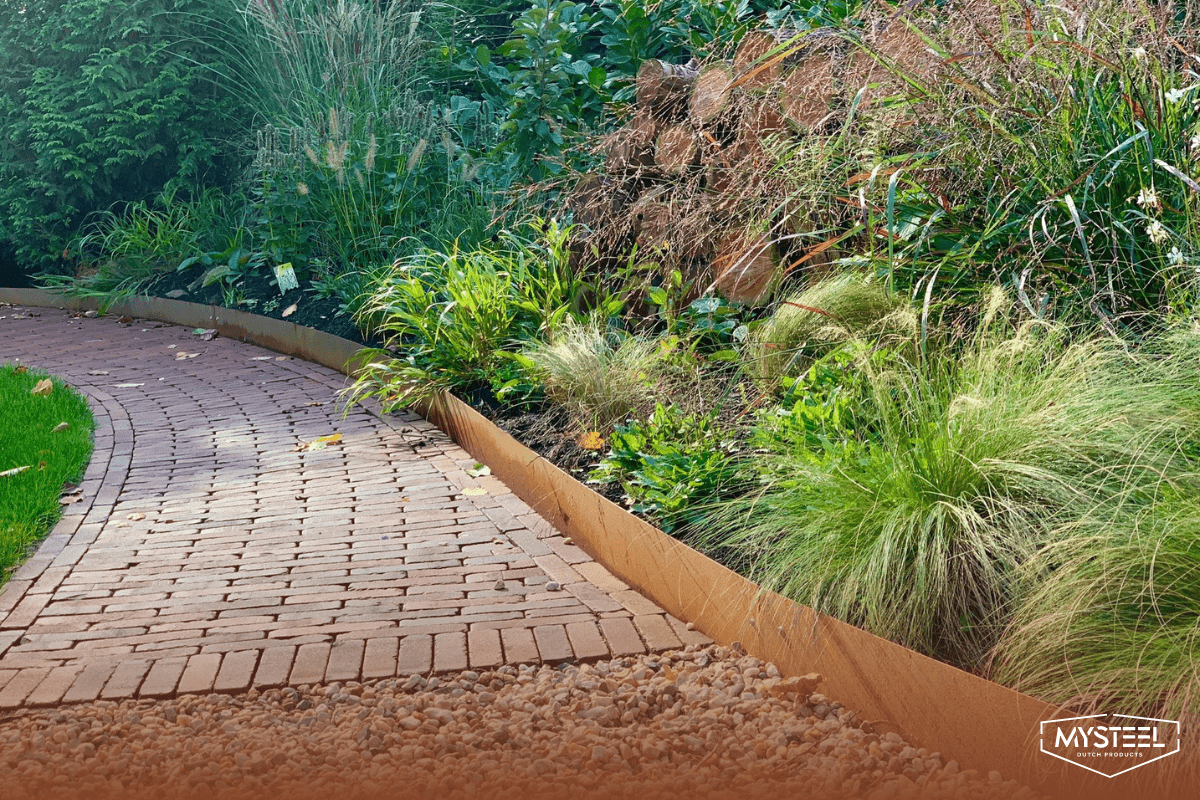

Why do they differ in height?
Although all border edges have the same amount of square meter material , they are not all the same height. This is due to the processing method.
The straight border edge is not processed and thus retains its original height. However, the pressed and set variants are processed, causing them to reduce in height. The processed border edges are therefore ultimately lower than the straight, unprocessed variant.
Here is an overview of the border edges:
- Straight border edge (15 cm, 25 cm, and 37.5 cm high)
- Pressed border edge (13 cm, 23 cm, 35 cm, and 45 cm high)
- Flex border edge (13 cm, 23 cm, 35 cm, and 45 cm high)
- Set border edge (12 cm, 22 cm, 34 cm, and 45 cm high)
Price per border edge is the same
All types of border edges have the same amount of material. In some cases, the thickness of the material may differ slightly. In order to create the set and pressed border edges, more processing is required in the factory than for the straight type.
Even though this requires extra work, the prices have largely been equalized with the straight border edge. The Flex border edge tends to be slightly more expensive. Therefore, almost all types of border edges at MySteel cost the same per meter. You don't have to worry about your budget. Just choose what you find beautiful and practical for your outdoor space.
For what applications are the border edges suitable?
Border edges are versatile. You can use them in different ways to organize and visually enhance your garden or outdoor space.
Gravel or gravel path
A border edge by gravel or gravel path has several advantages:
- Neat and organized: A border edge keeps the gravel in place, making it less likely to sink.
- Visually appealing: With a border edge, you highlight the gravel path. If you opt for a corten steel border edge, it will give the path a warm, natural appearance and create an interesting contrast with the white of the gravel.
- Provides structure to your garden design: By placing a pressed border edge along your path, you can create a clear route through the garden.


Along lawn or (artificial) grass
Do you want to place a border edge along your lawn or (artificial) grass? That's also a good idea because they help create clean boundaries and distinguish different garden zones. For example, with a straight border edge, you can create a separate vegetable garden or flower bed. Additionally, they have the following advantages:
- Weed control: Border edges help reduce weed growth by forming a physical barrier between the lawn and adjacent plant beds or paths.
- Protection against erosion: The sturdiness of the border edge prevents erosion. This keeps the soil in place and prevents rainwater from washing away the lawn.
- Control over growth: They ensure that grass or other planting doesn't grow outside their designated area. This keeps your garden neat and organized.
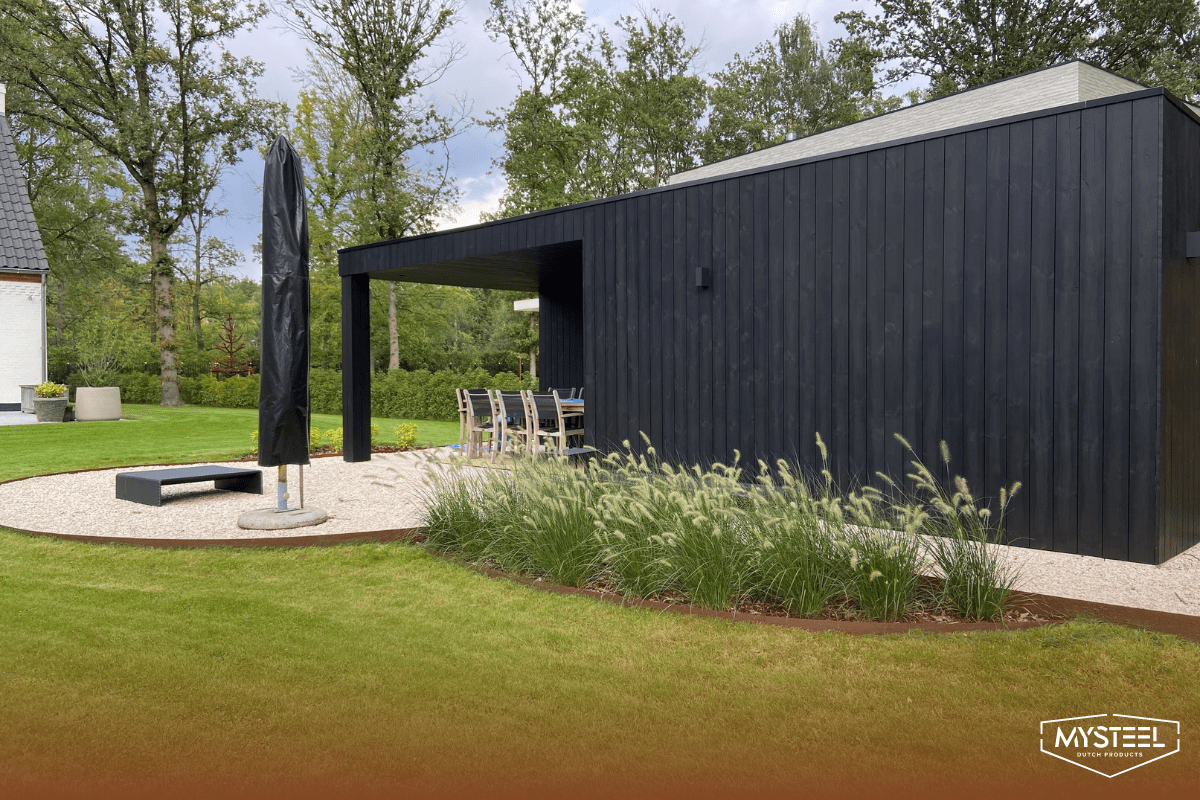

Pavers or pavement
For gardens with paving stones or pavers, border edges are essential. They offer several advantages:
- They keep the paving tight against each other: The pavers are less likely to sink and shift. They also prevent plant roots from pushing the pavement upwards.
- Improved safety: They accent the edges of the pavement. This reduces the risk of tripping over the pavement.
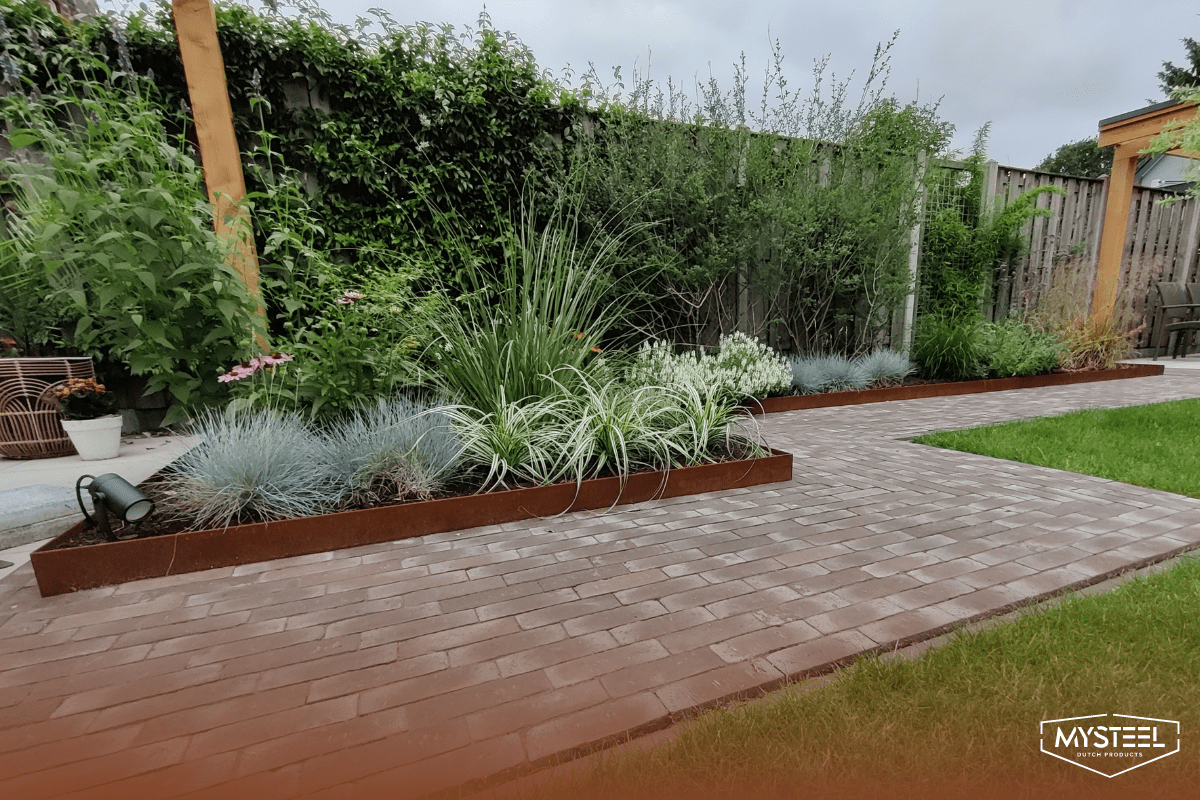

Separation of terrace
Border edges help to define and accentuate different parts of the garden. They provide clear boundaries and emphasize the delimitation of different zones in your garden. In the image below, the corten steel border edge is also combined with the corten steel planter.
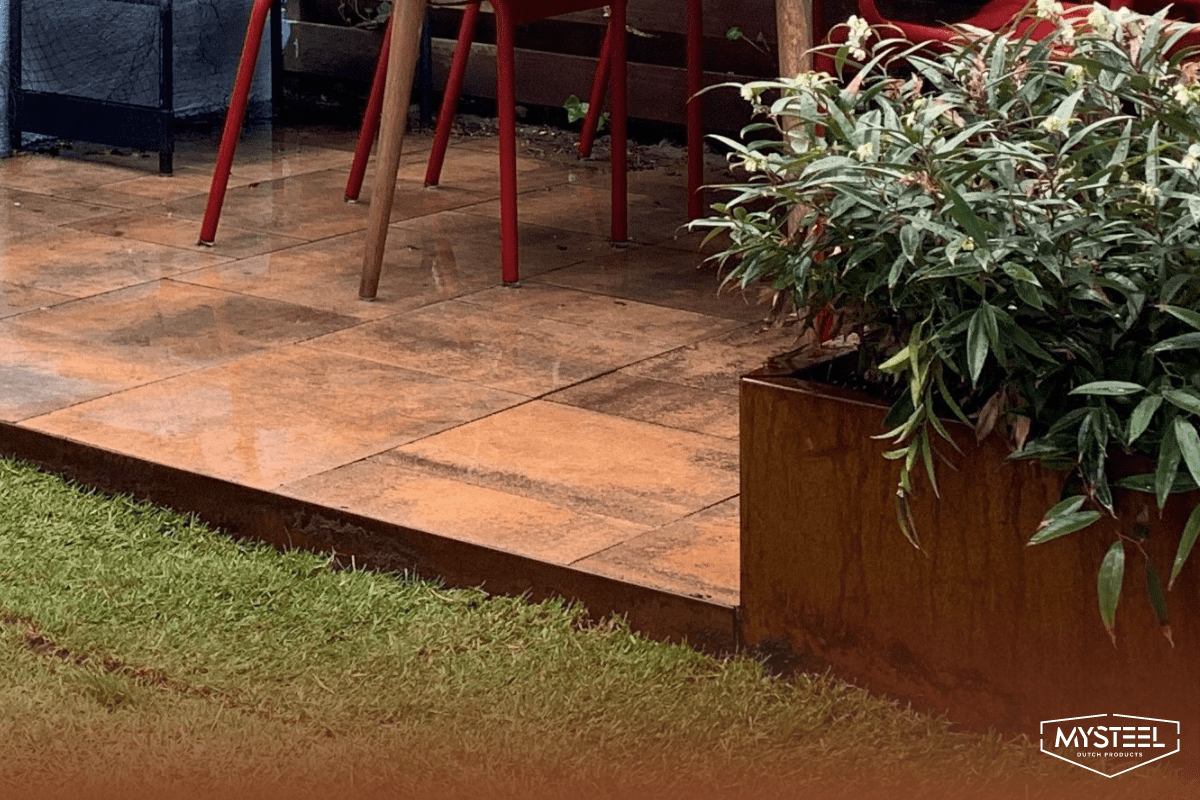

Flexibility
By bending the border edges, you can achieve the shapes and structures you want. Below, we look at how to bend or create angles with different types:
Bending straight border edge
The straight border edge is flexible. You can easily bend it into various angles and shapes. Whether you want to make a sharp turn or a flowing curve, you can easily adjust this border edge to fit the design of your garden.
Reading tip
Want to know more about how to best bend the border edge to the shape of your garden? Read the blog ‘Installing corten steel border edge’.
Making corners with set border edge
Do you want to make corners with your border edge? The set border edge is available in both inside- and outside corners. This makes it easy to transition between different parts of the garden.
Making corners with straight and pressed border edge
To make sharp corners with pressed and straight border edges, you can use a 90º coupling plate. This coupling plate can be secured to the border edge with self-tapping screws.
Available materials
Our border edges are available in two materials:
- Corten steel border edges. This material is a popular choice due to its natural rusty appearance. After a while, corten steel develops a beautiful patina that gives the garden a rustic charm.
- Galvanized steel border edges. This provides a sleek appearance that perfectly fits modern garden designs.
Both materials can withstand corrosion and various weather conditions. This makes them ideal for outdoor use.
Reading tip
Want to know more about the rusting process of corten steel? Read the blog about the corten steel rusting process and how to accelerate it.
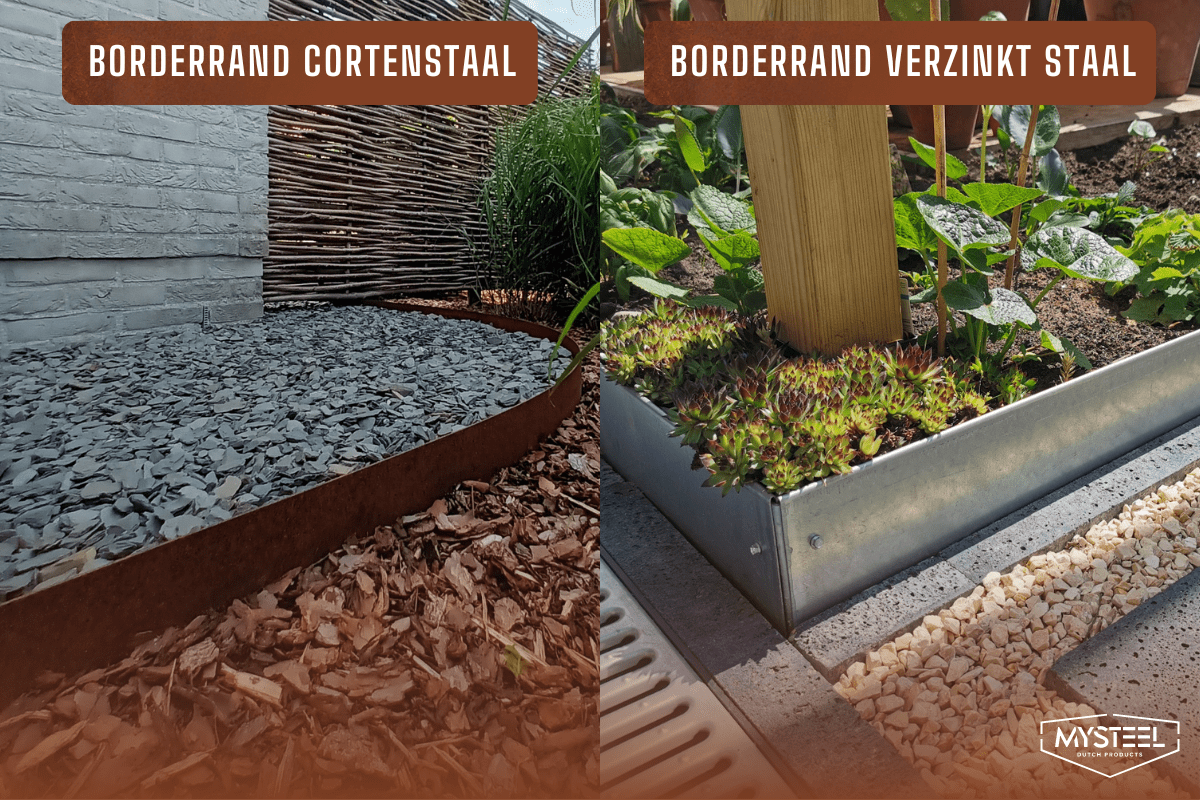

Conclusion
Border edges come in various shapes, sizes, and materials. By carefully considering what your outdoor space really needs, you can choose the best border edge. This way, you ensure that your garden is not only beautiful and tidy but also becomes a peaceful and cozy place where you enjoy spending time.

